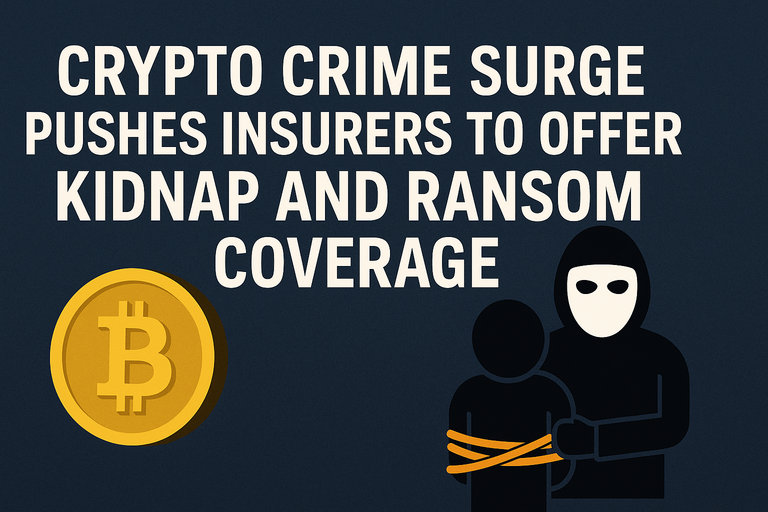Insurers Rush to Cover Kidnap and Ransom Threats Amid Crypto Crime Wave
As the cryptocurrency market matures and digital assets become increasingly mainstream, a new and troubling trend has emerged: an uptick in violent crime targeting crypto holders. From high-profile kidnappings to coercive extortion schemes, individuals with significant crypto holdings have become prime targets for criminals—and the insurance industry is starting to take notice.

In response to this growing threat, insurers are developing new forms of kidnap and ransom (K&R) coverage specifically tailored to the unique risks faced by crypto investors, executives, and company founders. These policies aim to address a stark reality: unlike traditional bank accounts, which are overseen and protected by centralized institutions, cryptocurrency wallets place full control—and risk—on the user. If a private key is lost or stolen, there's no institution to reverse the transaction or recover funds.
Several companies are now stepping in to fill this gap. AnchorWatch, a Bitcoin-focused insurance startup, has announced plans to offer bespoke K&R insurance as early as this fall. Similarly, Relm Insurance, based in Bermuda and known for its crypto-native policies, is also working to roll out similar offerings. These policies are designed to help cover the costs of negotiation, ransom payments, and even crisis response services in the event of a kidnapping or extortion.
According to Andrew Kurt, vice president of executive risk at insurance broker Hylant, the concept of K&R insurance isn’t new—but applying it to the crypto world represents a significant shift. Historically, K&R coverage has been sold to executives, diplomats, and wealthy individuals traveling or living in high-risk areas. Claims were infrequent, but the policies served as a crucial safety net. However, Kurt points out that recent developments in crypto-related crime suggest a change in both frequency and severity.
“Crypto holders are different from traditional financial executives because they often control assets directly. That makes them high-value, high-risk targets,” Kurt explained. “They’re not just vulnerable to cyberattacks—they’re exposed to real-world threats like kidnapping and physical coercion.”
The dangers are not merely hypothetical. In one disturbing case in New York City, an Italian tourist was allegedly held captive and tortured for over 24 hours by individuals demanding access to his cryptocurrency accounts. In another recent incident, Pierre Noizat, founder of the French Bitcoin exchange Paymium, was reportedly targeted by criminals who held his family hostage while attempting to extract crypto from him.
There have also been alarming cases globally, including in South Korea, where a crypto trader was lured into a fake in-person transaction and violently robbed. These high-stakes scenarios have spurred crypto executives to seek private security services, and some companies are implementing internal protocols to minimize travel risks and operational exposure.
Relm Insurance CEO Joe Ziolkowski emphasized that the underwriting process for K&R policies in the crypto sector requires a deep understanding of both physical and cyber vulnerabilities. Coverage costs will vary significantly depending on the client’s personal security setup, crypto custody practices, and digital hygiene.
As the threat landscape evolves, it’s clear that crypto holders can no longer afford to ignore physical security risks. While much of the crypto community has focused on protecting wallets from hackers and phishing attempts, these violent, in-person crimes are a stark reminder that the dangers extend far beyond the screen.
Insurers hope that these new policies will serve not only as a financial safety net but also as a prompt for better security awareness and preparedness. As crypto adoption continues to rise globally, personal safety and asset protection will need to be addressed with the same urgency as technological innovation.
Should crypto holders be responsible for their own physical security, or is it time for the industry to develop collective protections (like insurance or custody standards)?